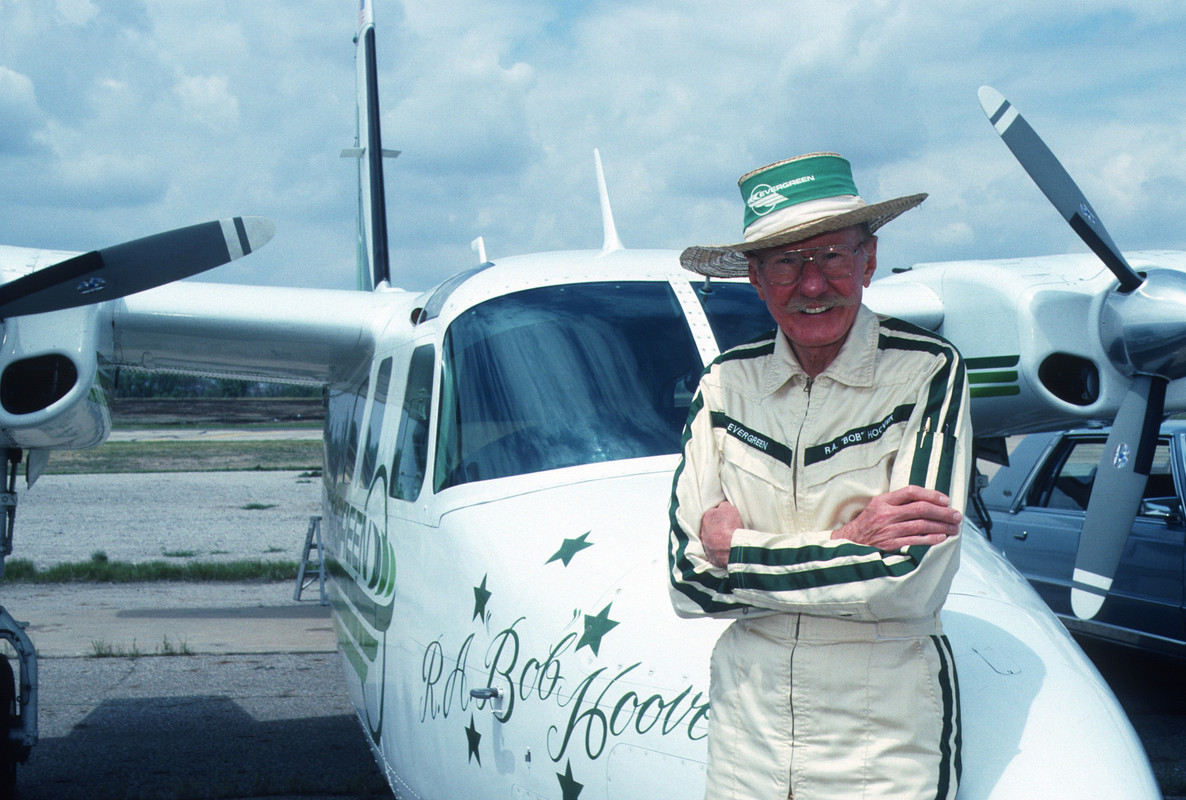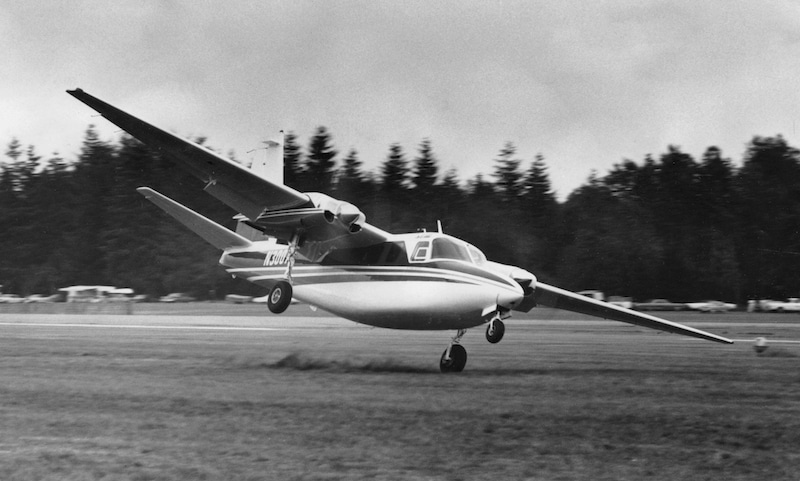R.A. Bob Hoover: Flying Legend
1922 - 2016

"The greatest pilot I ever saw"
Chuck Yeager, Military Test Pilot
“Bob Hoover was so much more than a great pilot. He was a great man and a model for what our community can & should be"
Mark Baker, President, AOPA
"He could do magical things with an airplane. He was the best"
Buzz Aldrin, Astronaut, Apollo 11
"The greatest stick-and-rudder man that ever lived"
General James "Jimmy" Dolittle
Robert A. 'Bob' Hoover is a pilot of legendary proportions, having been an Army Air Force pilot, a POW who escaped in a stolen German aircraft, military and civilian test pilot, and airshow pilot. He and his familiar North American P-51 and Rockwell Shrike Commander 500S were seen by millions at airshows from the 1950s through the 1990s.
Easily recognized by his characteristic straw Panama hat, Bob Hoover is widely considered one of the finest aerobatic pilots to have graced the skies. This page pays tribute to his accomplishments and is dedicated in his memory.
Chronology of Bob's Life and Work
- 1922: Born January 24 in Nashville, TN
- 1937: Began flight training in a Piper Cub at Berry Field (now Nashville Int'l Airport)
- 1940: Graduated high school & enlisted as a tail-gunner trainee in 105th Observation Squadron, Tennessee Air National Guard
- 1941-42: He reported for primary training on the Boeing Stearman PT-17 in Helena, Arkansas, later progressing to the AT-6 trainer, P-40 Warhawk, and P-39 Airacobra.
- 1942: His unit is deployed to the United Kingdom. Soon after arriving in Stone, England in December 1942, Hoover was designated a flight officer
- 1943: Deploys to North Africa, first to a supply depot in Mediouna, Morocco and later to Algiers. After convincing a general of his desire for aerial combat, Hoover is transferred to the 52nd Fighter Group in Corscia
- 1944: While operating as flight-leader on February 9, Hoover's Spitfire was shot down off the coast of Southern France during a fighter sortie. He is picked up by a German corvette and taken prisoner
- 1945: In April he mounts an escape from Stalag Luft 1 POW camp and captures a German Focke-Wulf 190 fighter plane, flying it to safety in Holland. Upon his return to America he is assigned to Wright Field, Ohio as test pilot
- 1947: Served as back-up pilot and wingman for Chuck Yeagar's first manned supersonic flight in the Bell X-1. Hoover is seriously injured while bailing out of an F-84 Thunderjet following an engine fire over Antelope Valley, California
- 1949: Leaves military service and began civilian career with Allision Division of General Motors
- 1951: Began working for North American Aviation as test pilot. Hoover was later deployed to South Korea to instruct pilots on the F-86 Sabre during the Korean War.
- 1968: Hoover began flying aerobatic demonstrations in the Aero Commander, making his first appearance this year in Reading, Pennsylvania.
- 1973: Bob transitions to an upgraded Shrike Commander (registration N500RA) for airshow flying
- 1986: Joins Evergreen Aviation as officer and board member.
- 1989: Bob's aircraft crashes on departure from San Diego Brown Field after it was incorrectly filled with Jet Fuel. He later invents the "Hoover Nozzle" and "Hoover Ring," now commonplace on aircraft and fueling equipment across the industry, to prevent mis-fueling accidents.
- 1993: Hoover's flying privileges were revoked by the FAA. An appeal is eventually escalated to the U.S. Supreme Court
- 1994: Obtains a first-class commercial pilot rating from the Australian Civil Aviation Authority
- 1999: Performed final airshow performance on November 13 at Luke AFB in Arizona
- 2000: Hoover retires from the airshow circuit, citing rising insurance costs.
- 2003: Hoover delivers his famous Shrike Commander to the National Air & Space Museum Udvar-Hazy Center at Dulles Airport on Oct 10, 2003
- 2016: Died October 25 in Palos Verdes Estates, CA at the age of 94
Awards & Distinctions
- Distinguished Flying Cross
- Soldier's Medal of Valor
- Air Medal with Clusters
- Purple Heart
- French Croix de Guerre
- Lindbergh Medal for lifetime achievement, Lindbergh Foundation, 1986
- Inductee, National Aviation Hall of Fame, 1988
- Inductee, Aerospace Walk of Honor, 1992
- Inductee, Int'l Council of Air Shows Hall of Fame, 1995
- Living Legends of Aviation Freedom of Flight Award, 2006
- National Air and Space Museum Trophy, 2007
- Inductee, Int'l Aerobatic Club Hall of Fame, 2009
- National Aeronautic Association Wright Brothers Memorial Trophy, 2014


Credit : Juli Singh
Sharing is Caring & Helping Eachother








